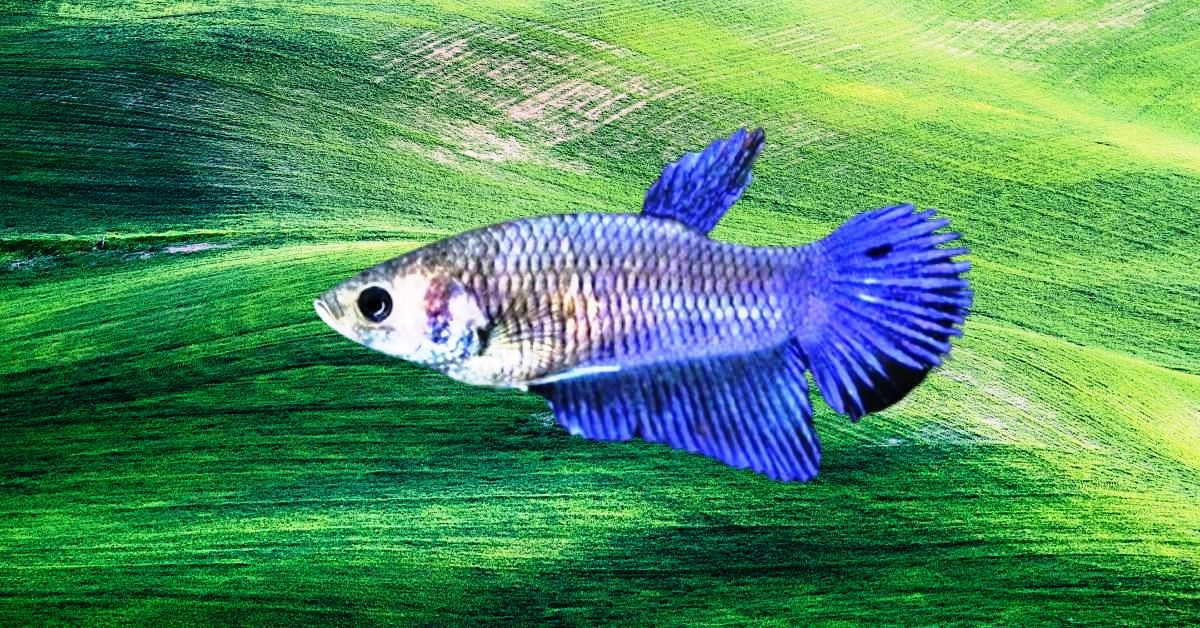An Introduction to Female Betta Fish
Female Betta Fish, known for their less aggressive nature compared to their male counterparts, offer a unique charm in the world of aquariums. Typically smaller and sporting subtler colors, they can coexist in groups known as ‘sororities’, creating a dynamic social environment. Unlike males, female bettas have shorter fins and a more understated beauty, but they are equally captivating.
They thrive in well-maintained tanks with ample space and hiding spots. Understanding their specific needs and behaviors is key to keeping them healthy and happy. Female bettas present a serene yet engaging addition to any aquatic setup, appealing to both novice and experienced aquarists
Female Betta Fish: More Than Just Dull Companions
Female Bettas are often overshadowed by their vibrant male counterparts but are more than just dull companions. They exhibit a range of subtle yet enchanting colors and can live peacefully in groups, known as sororities. This communal living brings out their social dynamics, adding a fascinating aspect to aquarium life. Contrary to popular belief, female bettas are not colorless; their hues may be less intense but are equally captivating.
Their calmer disposition makes them ideal for shared tanks, providing a serene aquatic experience. Female Bettas offer a blend of understated beauty and intriguing social interactions, making them a delightful choice for any aquarist.
Lifespan and Habitat
Betta fish, both male and female, typically have a lifespan of around three years, a journey filled with vibrant living in well-crafted habitats. Originating from the warm, shallow waters of Thailand, Malaysia, and Cambodia, their natural habitat includes rice paddies and slow-moving streams. These environments have shaped their unique adaptability and resilience. In captivity, replicating these conditions with warm, clean water and ample space is crucial for their well-being.
Providing a habitat that mimics their natural setting not only ensures their health but also allows their personalities and colors to flourish, making each moment of their life span truly captivating.
The Threatened Species and Captive Breeding
Bettas are considered a threatened species in their native Southeast Asian habitats, primarily due to environmental changes and habitat destruction. Despite this, their popularity in the aquarium trade has led to extensive captive breeding, ensuring their survival and proliferation. Through selective breeding, a wide array of betta variants has emerged, showcasing diverse colors and fin types. While this has made bettas more accessible and varied, it also highlights the importance of conserving their natural habitats.
Captive breeding plays a critical role in preserving these beautiful fish, but it also underscores the need for environmental conservation efforts to protect their wild counterparts
Understanding Female Betta Fish and Sororities
Understanding Female Betta Fish and their propensity to form sororities is key to successful betta keeping. Unlike males, female bettas are less territorial and can coexist peacefully in groups, creating dynamic and interactive ‘sororities’ within the aquarium. This social structure allows for a fascinating display of hierarchy and communal interaction. To maintain harmony in a sorority, it’s crucial to provide ample space, hiding spots, and a stable environment.
Observing their interactions offers insight into their social behaviors and enriches the aquarium experience. Proper care and attention to their needs ensure a healthy, stress-free habitat for these captivating creatures.
Reproduction and egg-laying
In the world of bettas, reproduction and egg-laying are intriguing processes. During mating, the male betta builds a bubble nest at the water surface, where the female then lays her eggs. The male fertilizes these eggs, which he carefully gathers and places in the nest for protection. This bubble nest acts as a nurturing sanctuary for the eggs, ensuring their safety and proper development. After fertilization, the female betta plays no further role in the process. The eggs hatch within a few days, releasing tiny fry (baby fish) into the water. The fry are self-sufficient from birth, navigating their new aquatic world independently.
Tank and Habitat Conditions for
Creating an ideal tank and habitat for betta fish is crucial for their health and well-being. Bettas thrive in warm, clean water, with temperatures ideally between 75-80°F. A pH level of around 7 and moderate water hardness are optimal. Their natural habitat, consisting of shallow waters and rice paddies, can be emulated by providing a spacious tank with ample hiding spots like plants and caves. This setup not only replicates their natural environment but also reduces stress. A gentle filtration system is important to keep the water clean without creating strong currents, and regular water changes are essential to maintain a healthy habitat.
Behavioral Traits of Female Betta Fish
Female Bettas exhibit a unique set of behavioral traits that differentiate them from their male counterparts. Known for being less aggressive, they can coexist in groups, forming hierarchies within their sororities. These fish are often curious and interactive, showing a range of behaviors from playful to assertive. They are not as territorial as males, but they do establish personal spaces within the tank. Female Bettas are also known for their occasional flaring, a display usually more subdued than males. They are active swimmers and enjoy exploring their environment, often seen swimming through plants or investigating new additions to their habitat.
Identifying Female Bettas
Identifying female bettas involves noting several distinct physical characteristics. Typically, female bettas are smaller in size, reaching up to 2.25 inches in length. They have shorter fins compared to males, particularly the anal and dorsal fins, and their tail fins are less flamboyant. One of the key identifiers is the presence of an ‘egg spot’ – a small, visible spot on the underside of their body, indicating the reproductive organ. While their colors may be less vibrant than males, female bettas still display a range of hues. Observing these traits can help distinguish female bettas, allowing for proper care and housing in aquariums.
Popular Female Betta Varieties
HMPK Turquoise Female
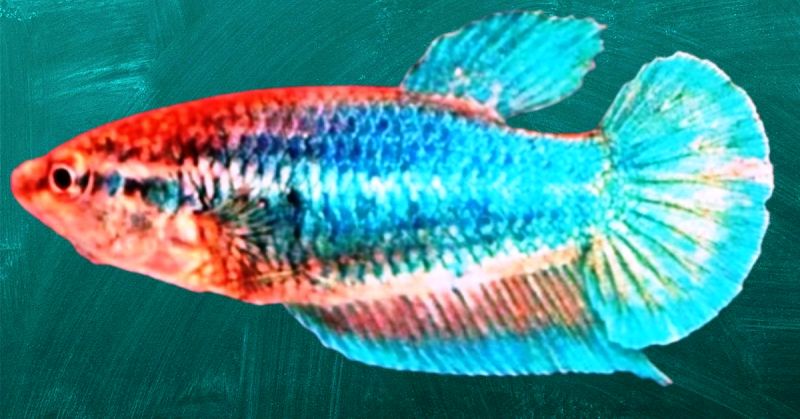
The Half-Moon Plakat (HMPK) Turquoise Female Betta is known for its distinctively shaped tail that mirrors a half-moon and possesses shorter fins compared to other Plakat varieties. This unique combination gives the fish an elegant, yet slightly truncated tail that is visually striking. The tail’s elaborate form, coupled with its shorter length, allows for graceful movement, while still enabling the fish to navigate swiftly through the water. This balance of beauty and agility makes the HMPK Turquoise Female an attractive choice for Betta enthusiasts, offering both aesthetic appeal and a lively demeanor. The turquoise coloring adds to its allure, making it a captivating addition to any aquarium setting.
HMPK Marble
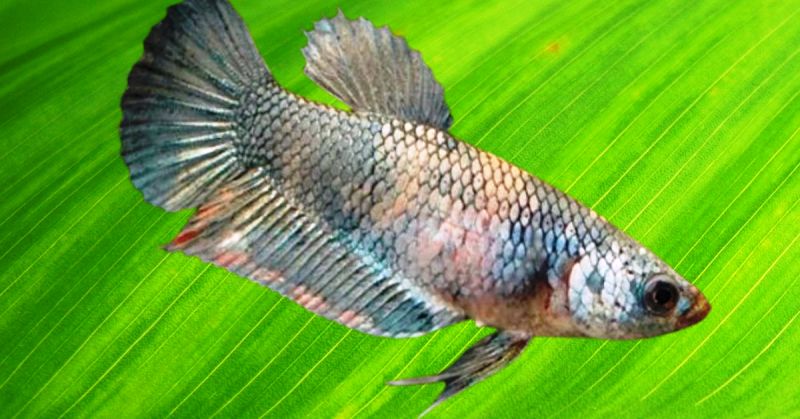
The HMPK Marble Female Betta, a striking variation of the plakat betta, blends the distinct shorter fins of the plakat with the elegantly curved tail typical of the half-moon variety. Exhibiting a shimmering silvery appearance, this Half-Moon Plakat (HMPK) showcases an enchanting blend of form and function. Available in both male and female forms, HMPK Bettas come in an array of colors, offering a diverse palette for enthusiasts.
These Bettas are particularly favored by pet owners for their resilience, standing out as one of the hardier varieties among betta fish. Their robustness, combined with their unique aesthetic appeal, makes them a popular choice for those looking to add some vibrant yet durable character to their aquariums. The HMPK Marble Female, with its distinct finnage and captivating coloration, is a testament to the diverse and fascinating world of betta fish.
HMPK Copper
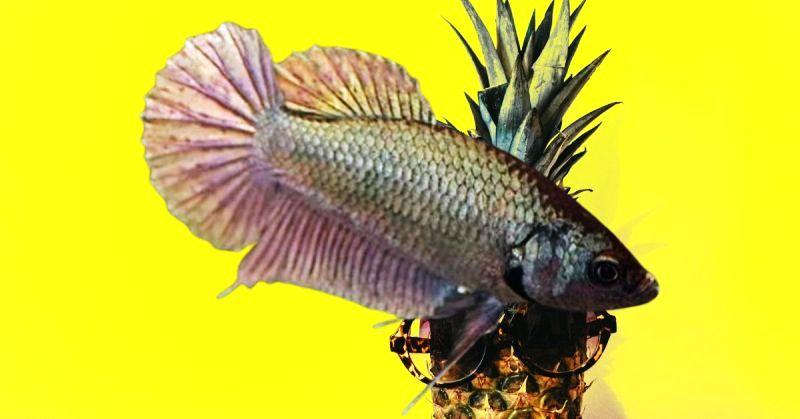
The HMPK Copper Betta is a stunning variety of the half-moon plakat, characterized by its dazzling coppery sheen. The scales of this particular betta radiate a metallic glow, making it stand out in any aquarium. Particularly noteworthy is the female of this species, whose shimmering scales reflect a spectrum of rainbow colors in subtle, gradient transitions. This captivating display of colors enhances the fish’s natural beauty, creating a mesmerizing visual effect in the water.
The metallic luster of the HMPK Copper Betta, combined with its graceful form, makes it a prized choice for betta enthusiasts and aquarium hobbyists. This betta’s unique coloration, which shifts and changes in different lighting conditions, adds an element of dynamic beauty, making it not just a pet but a living piece of art in any aquatic setting.
HM Red Dragon
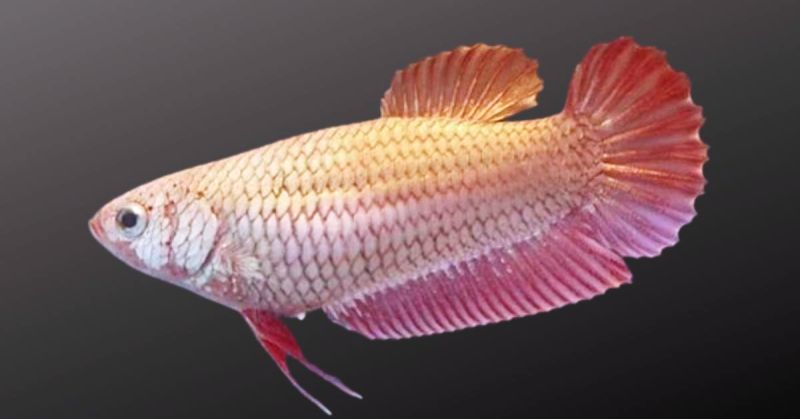
The Half Moon (HM) Red Dragon Female Betta, a creation of American breeder Peter Goettner, represents a refined evolution in the world of bettas. While the Half Moon variety is known to be slightly more challenging to breed compared to the plakat, it is recognized for its less aggressive nature. In this breed, male Half Moons are specifically bred to exhibit larger, more expansive tails that boast a flowing, elegant form.
The female counterparts, while maintaining the characteristic half-moon-shaped tail, possess a more traditional and understated appearance. This balance between aesthetic appeal and breeding practicality makes the HM Red Dragon Female a sought-after choice for enthusiasts. The distinct tail shape, resembling a crescent, adds a unique charm to the female variant, making it not only a beautiful addition to aquariums but also a testament to the intricate art of betta breeding.
Traditional PK Yellow Dragon Female
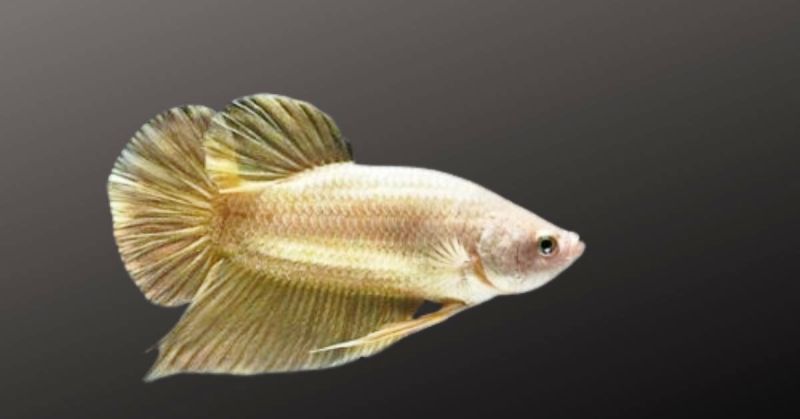
The Traditional PK (Plakat) Yellow Dragon Female Betta is a classic representation of its kind. Originating from the Thai word ‘plakad’, which translates to “fighting fish,” the term ‘plakat’ is often used to describe betta fish variants with shorter fins. This particular variety is sometimes referred to as a short-finned fighter, highlighting its distinct fin structure. In many parts of the world, these fish are bred for fighting, a practice that has influenced their physical development.
The males of this species are characterized by prominent gill beards that extend below the chin, giving them a more robust and thicker appearance. In contrast, the females are smaller and sleeker, lacking the pronounced gill beards that are seen in males. The Traditional PK Yellow Dragon Female, with its vibrant yellow hue and streamlined physique, is a beautiful example of this variety, embodying the unique traits and history of the plakat betta lineage.
Traditional PK Red Dragon
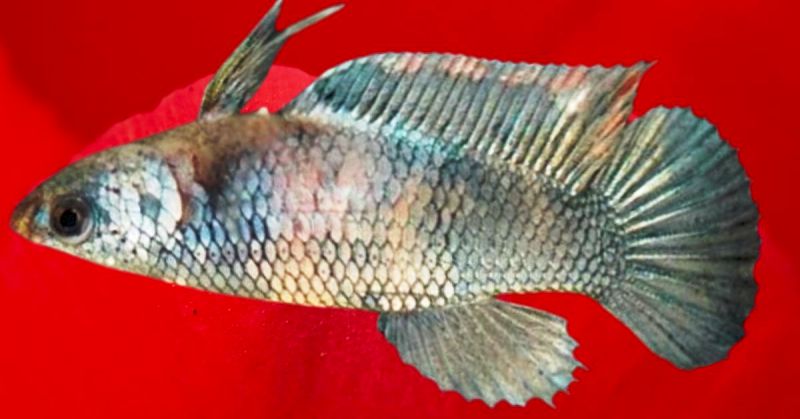
The Traditional PK (Plakat) Red Dragon Female Betta is renowned for its striking vivid red coloration, making it a visually stunning variety. Plakats, characterized by their shorter fins, are generally more active and energetic compared to their long-finned counterparts. This agility is partly due to the lack of cumbersome, flowing fins, allowing for greater freedom of movement. Additionally, this variety is highly valued by betta enthusiasts and pet owners for its impressive resistance to illness.
This robust health makes the Traditional PK Red Dragon Female not only a beautiful addition to any aquarium but also a practical choice for those seeking a hardy and resilient fish. The combination of its vibrant color, spirited nature, and health resilience makes it a favored choice among those who appreciate the beauty and vitality of betta fish.
HM Red BF
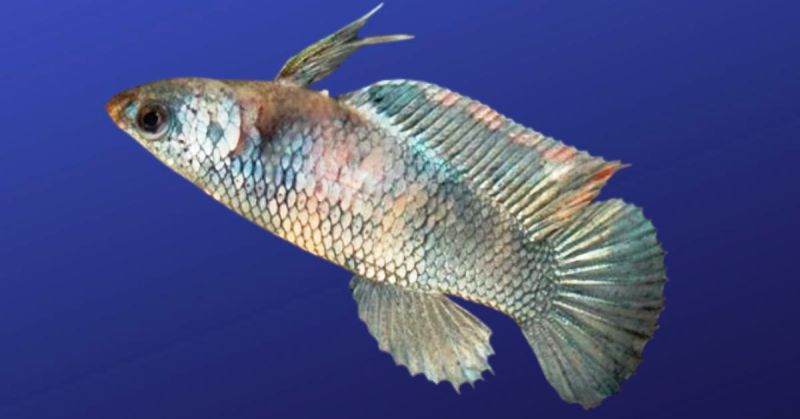
The HM (Half Moon) Red BF (Butterfly) Female Betta is a captivating variety, easily recognizable by the distinctive color bands adorning its tail and fins, a signature trait of the butterfly betta. This particular betta boasts a vibrant red hue that gracefully transitions along the length of its tail and fins. Starting with a deep, rich red at the base, the color gently fades as it approaches the edges, culminating in an eye-catching band of silvery white.
This striking contrast not only highlights the elegant shape of its fins and tail but also accentuates the butterfly-like appearance that this variety is named for. The HM Red BF Female’s unique coloration and patterning make it a standout in any aquarium, capturing the attention of betta enthusiasts and adding a splash of vivid color to the aquatic environment.
CTPK Multicolor
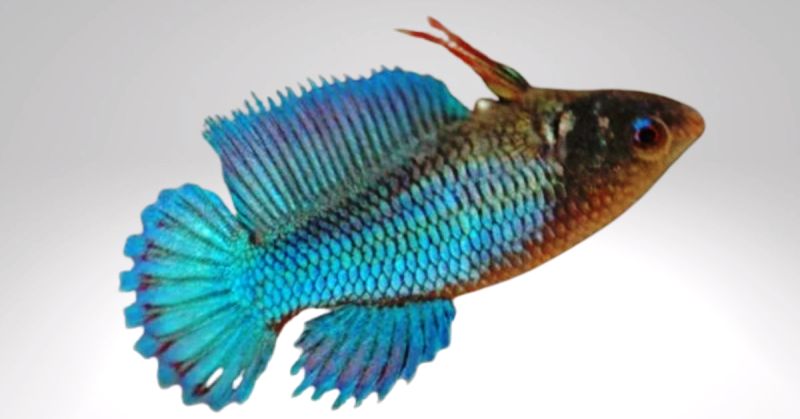
The CTPK (Crown Tail Plakat) Multicolor Female Betta is distinguished by its unique fin rays that extend beyond the fin membrane, creating a crown-like silhouette for the tail, hence the name crown tail plakat. Sometimes known as a fringetail, this variety captivates with its fin structure that emulates a regal crown. Despite having slightly shorter fins than the standard plakat, the CTPK still boasts the characteristic crown-shaped tail, a defining feature of this group. This type of plakat is a variation within the crown tail family, with full crown tails typically exhibiting longer fins and tails.
The CTPK Multicolor Female stands out for its balanced combination of the crown tail’s distinct fin pattern and the planet’s more compact fin size, making it a unique and visually appealing choice for Betta fish enthusiasts seeking a blend of elegance and distinctive fin architecture.
Origin of Betta Fish
Betta fish, celebrated for their vivid hues and distinctive characters, originate from the rich aquatic environments of Thailand, Malaysia, and Cambodia. In these native habitats, bettas flourish in shallow waterways, rice fields, and gentle streams, adapting to Southeast Asia’s varied ecological landscapes. Understanding their origins deepens our appreciation of their inherent behaviors and traits.
In the natural realm, bettas have developed complex survival skills to cope with the sometimes harsh conditions of their indigenous waters. Notably, bettas possess a labyrinth organ, an evolutionary marvel, which allows them to consume atmospheric oxygen. This remarkable adaptation is crucial for their survival in environments with low oxygen levels, such as still waters and puddles. This ability has been instrumental in their thriving across diverse habitats in Southeast Asia.
Captive breeding has further enhanced bettas, resulting in an array of colors and fin designs that captivate enthusiasts today. While modern bettas only distantly resemble their Southeast Asian forebears, selective breeding has produced a wide variety of colorations and fin styles. This extensive breeding practice carried out over many generations, has created the stunning variety of betta fish seen in aquariums around the globe.
FAQ on ” Female Betta Fish”
Q: Can female live together?
A: Yes, female bettas can coexist peacefully in groups known as sororities.
Q: How do I identify a female betta Fish ?
A: Look for smaller size, shorter fins, and the presence of an egg spot on the underside.
Q: What are the ideal tank conditions for female bettas?
A: Warm water (75-80°F), pH around 7, and a spacious tank with hiding spots.
Q: Do female bettas require special care?
A: They need clean, warm water, a balanced diet, and a stress-free environment, similar to male bettas.
Conclusion on Female Betta Fish
In conclusion, female betta fish offer a fascinating and somewhat underappreciated aspect of the aquarium hobby. Their subtler hues and smaller size compared to males belie a complex and engaging social structure, particularly in sorority settings. Understanding their specific needs—from tank conditions and habitat to recognizing their unique behavioral traits—is essential for their well-being. The world of Female Betta Fish is one of intricate beauty and serene coexistence, providing a tranquil yet dynamic addition to any aquarium. As aquarists, appreciating and catering to the nuances of these elegant creatures not only ensures their health but also enriches our experience with the diverse and captivating world of bettas.
